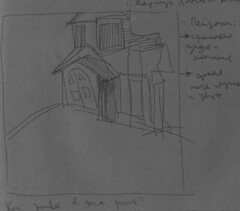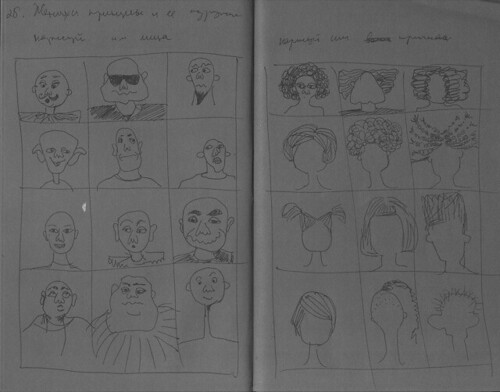"Каляки-Маляки на Халлоин"
Серые страницы. Бумага должна быть очень плотная хорошего качества, чтобы рисунки остались и их можно было долго хранить. Можно рисовать как черным, так и белым карандашом. 48 страниц. Тетрадка на скрепки. Обложка мягкая, мелованная.

Эта книга из традиционной серии "Для девочек".

Правда состоит в том, что девочки любят рисовать платья, украшения, представлять себе дворцы, замки, придворных и праздненства.
Однако, совершенно не обязательно представлять себе принцессу, политую двойным слоем глянца.
Эта книжка для таких же маленьких девочек, какой была я: для строптивых, одиноких, заносчивых и не похожих на других.
Dr. Seuss to Appear in Russian Translations
By Anna Arutiunova
The last few decades have passed in Russia under the aegis of "Westernization," a trend particularly noticeable in contemporary children’s literature. Bookstore shelves have been flooded with mythical characters, glamorous super-heroes and endless derivatives of commercially successful films and cartoons. With ongoing pigeonholing of children’s literature, Walt Disney characters have become nearly sole legitimate representatives of American children’s books in Russia and around the world. The reason behind this phenomenon is simple — writing for children is infinitely more challenging than composing for adults. "An author for children must respect children’s intelligence; he or she must understand that just because children may have less height, they are not less intelligent or less deserving of high quality literature. At the same time, the author must recognize that the child does know less vocabulary, and should not write over children’s heads," elaborates Philip Nel, Associate Professor and Director of the Program in Children’s Literature at Kansas State University. Thus dismayed by the status quo, some Russian parents are seeking relief in the best the United States has to offer.



